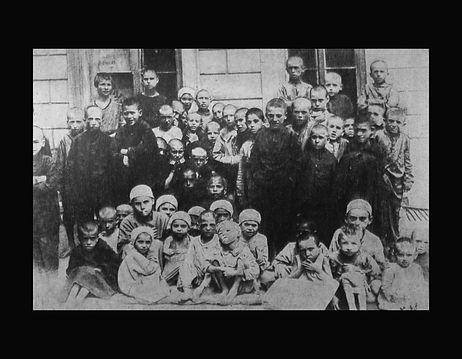THE JEWISH EXPERIENCE: POGROMS

The Pogroms Have Been Called "THE FORGOTTEN HOLOCAUST"

checking
checking












A Jewish factory worker tortured to death by bandits in Belarus. His entire chest was pierced by red-hot nails. There is also a big wound in his stomach.
Captions provided by Sergei Kan
A synagogue destroyed by shells. Town of Borisov, Minsk guberniia.
Description: Memorandum to the Jewish Department of the People’s Commissariat of Nationalities of the Russian Soviet Federative Socialist Republic (NKN RSFSR) from the representatives of the Borisov Revolutionary Committee, Barnai and Oksiuchits, on the aid to the inhabitants of Borisov, Minsk Province.
November 17, 1920.
To: Moscow, Commissariat of Jewish Affairs, Comrade Mandel’shtam
The Polish White Guardist bands, pressured by the valiant Red Army to leave Borisov, staged a most cruel pogrom in the city. A considerable part of the city was annihilated by fire, but even that part of the city which was spared by the fire consists of nearly destroyed shacks; there is not a single unbroken window, nor a single leakproof roof. Moreover, every household item, clothing, footwear, kitchenware, and nearly the entire population fell victim either to the fire or to plunder. Thus, before the entry of Soviet authorities to the city, the city’s population of 26,000 inhabitants for the most part consisted of naked, scared, and morally and physically tortured beggars.
This was whooped and talked about at that time in the whole Republic, and also in the Soviet press. There were also many flattering promises on the part of the central [Soviet] institutions.
At the same time, it has to be mentioned that Borisov has not received any real help to this day, although about half a year has passed since Borisov was taken over by Soviet power. Considering the aforementioned [facts], the impending cold, and that various illnesses began to rage epidemically, in the name of saving from death this destitute population we emphatically request to send for 5000 men, 6000 women, and about 10,000 children of various ages underwear, clothing, footwear, and household items. We again underline that this help has to be provided immediately, the time is short, and the winter with all its burdens is approaching.
Barnai
Oksiuchits
Captions provided by Sergei Kan


Two orphans from Trotstiansta whose parents were brutally murdered in front of them. They had wandered for a long time until they reached Odessa where they were placed in an orphanage.
Caption provided by Sergei Kan
BOOK: SLAUGHTER OF JEWS IN THE UKRAINE
CHAPTER: TROSTIANETZ
PAGES: 393-401
Town of Trostianetz (Government of Podolia)
I. Testimony of Bogdansky, July 25, 1919
Trostianetz is a town in the government of Podolia, on the railroad, about 50 versts to the southwest of Gaisin. The Jewish population is about 500 families. There are almost no Christians; they live in the country outside. The pogrom movement began on May 1 and lasted until the 17th. The principal butchery was on May 10. The pogrom was perpetrated by local peasants with the watchword “Kill the Jews, away with the commune.” The organizers of the pogrom were persons known as sympathizers with the Ukrainian nationalist movement: the student Gonzenko and the former Petlurist officer Drevinsky. They rang the signal bell, the peasants collected and the pillaging began. In the commissariat’s quarters about four hundred Jews were herded together—all of the male sex, beginning with boys of ten and ending with decrepit old men. Drevinsky energetically spread the rumor that Jews from surrounding towns were approaching in armored automobiles, and that in one village they had already massacred all the Christian. “if we simply keep still, they will massacre all of us, too.” Then the peasants rushed to the quarters of the commissariat and began to throw bombs through the windows and to fire from rifles. Since the Jews who were there threw themselves flat on the floor, the peasants then rushed in and massacred them all. This butchery was perpetrated on Saturday, May 10, at 6 P.M.; but the night before an enormous grave had already been dug outside the city. All the bodies were carried there in carts and dumped into the pit. About eighty corpses were carried out from the dwellings. The total number of dead was as many as 400, among them 13 women. The murders continued until ten o’clock in the morning; but on the next day only pillaging and general devastation took place.

Victims of pogrom in Velizh, Vitebsk guberniia. The 4-year old boy had his stomach pierced; the seven-year old girl’s skull had been crushed.
Captions provided by Sergei Kan
Inspired by Pogroms


.jpg)
.jpg)


© Diane Covert 2018